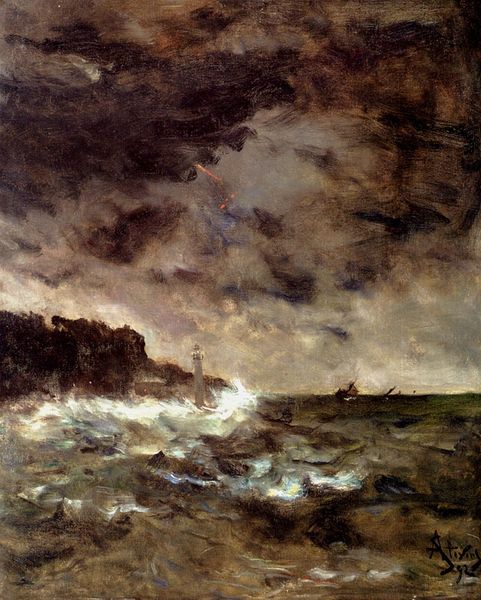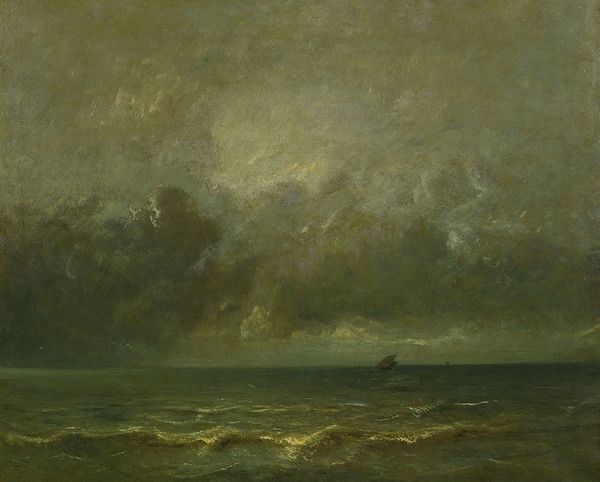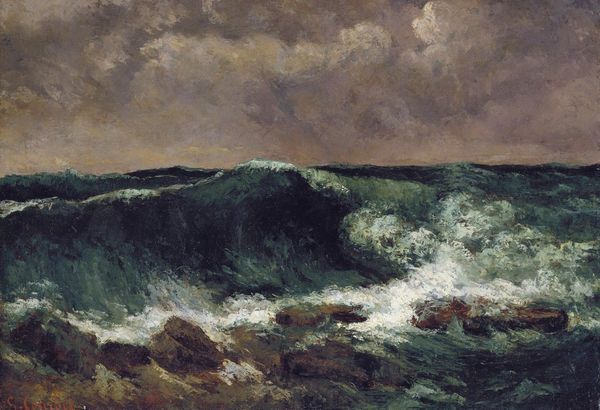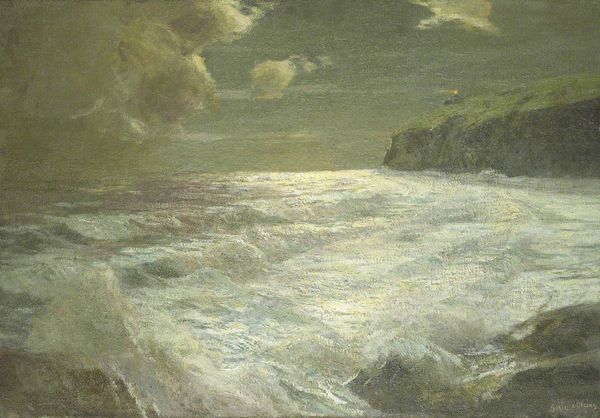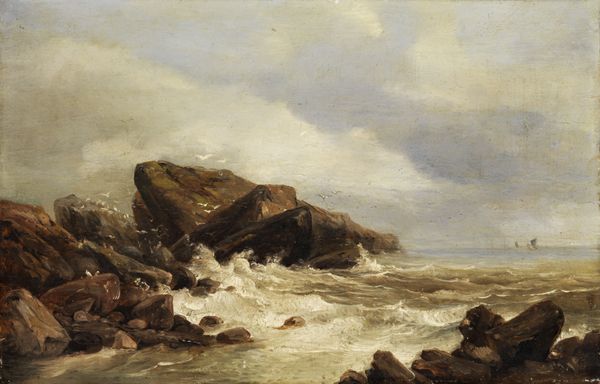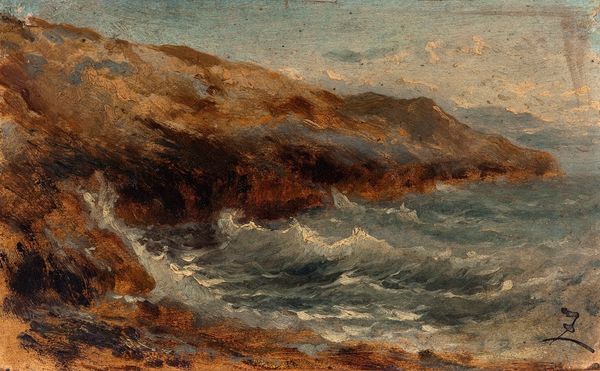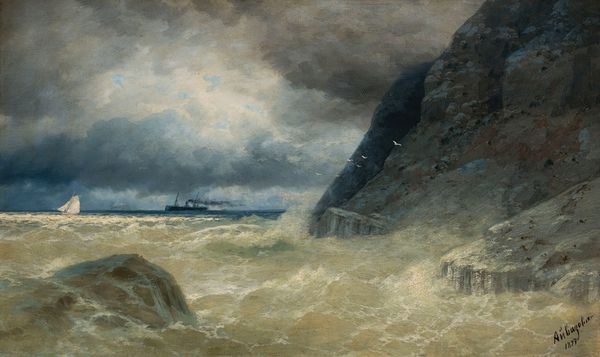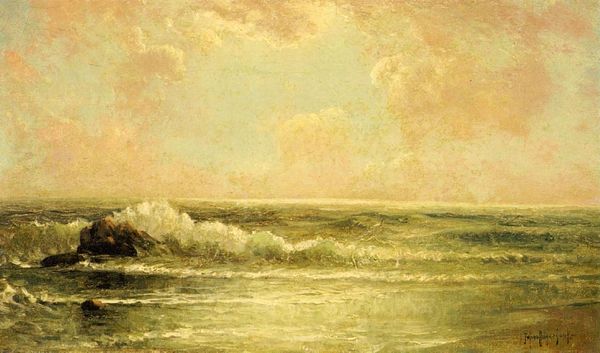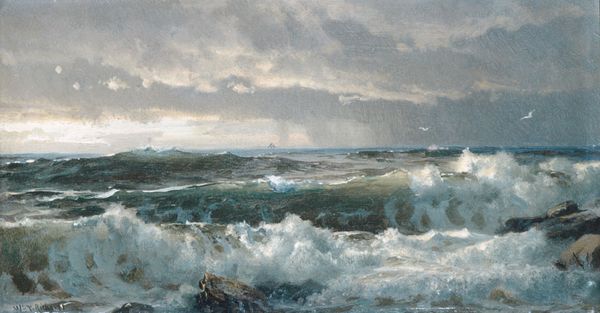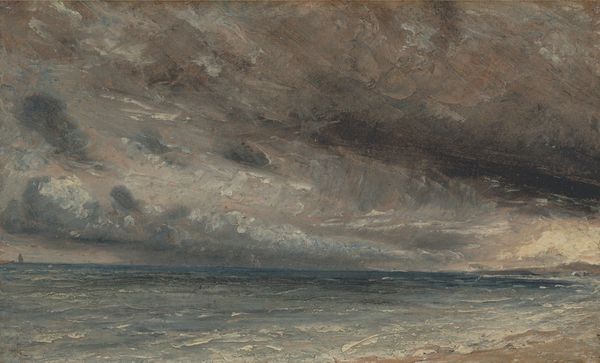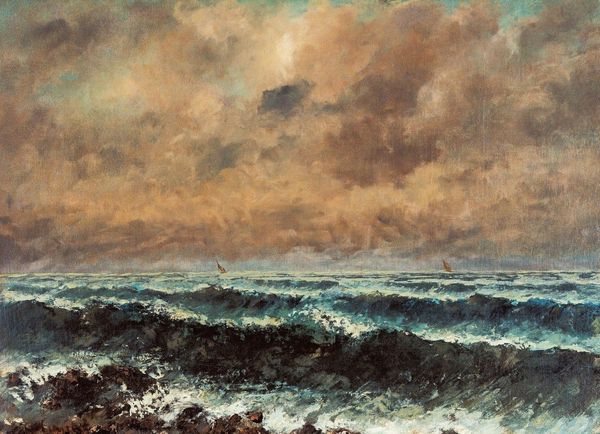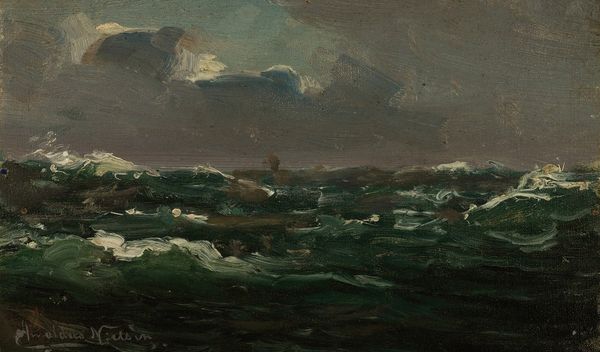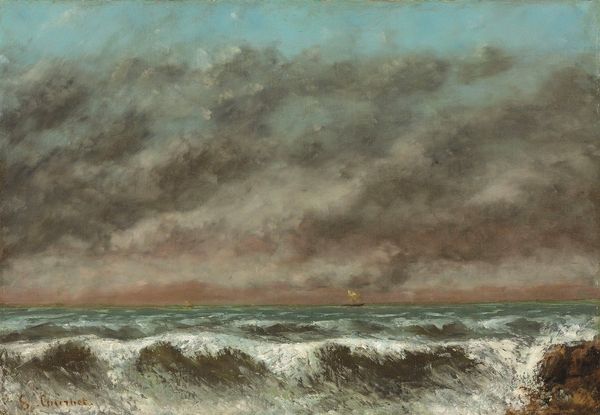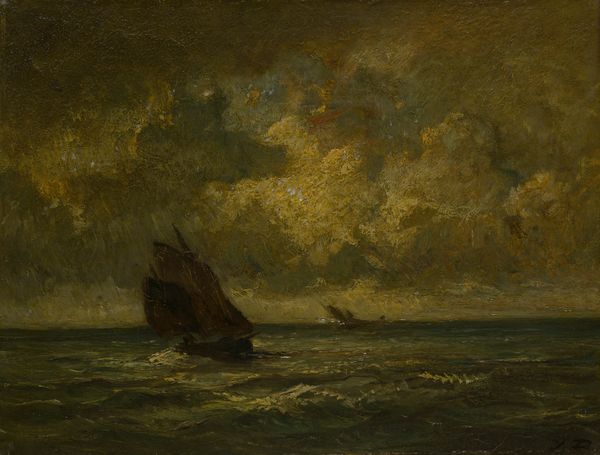
Copyright: Public domain
Jules Dupré painted this marine landscape, likely in the mid-19th century, capturing the dramatic interplay of nature's elements with bold brushstrokes. The composition divides into three distinct horizontal bands: turbulent sea, rugged coastline, and a stormy sky heavy with dark, ominous clouds. Dupré masterfully uses light to guide our eye, with the crests of the waves catching the light and contrasting sharply with the brooding darkness above. This juxtaposition creates a palpable sense of tension. The rugged texture of the cliff, rendered with thick impasto, adds a tactile dimension to the scene, grounding the viewer amidst the atmospheric turmoil. Here, we see more than just a landscape. Dupré's Romantic sensibility invites a reflection on nature's sublime power. The turbulent brushwork embodies this struggle between humanity and the natural world, where the observer is immersed in a landscape that destabilizes notions of tranquility. Consider how Dupré uses the visible brushstrokes and a somber palette. These choices function beyond mere representation; they express a dynamic and emotional engagement with the landscape. By disrupting the smooth surfaces and harmonious colors, Dupré challenges traditional landscape painting, and invites a deeper contemplation on the relationship between nature, representation, and human emotion.
Comments
No comments
Be the first to comment and join the conversation on the ultimate creative platform.
